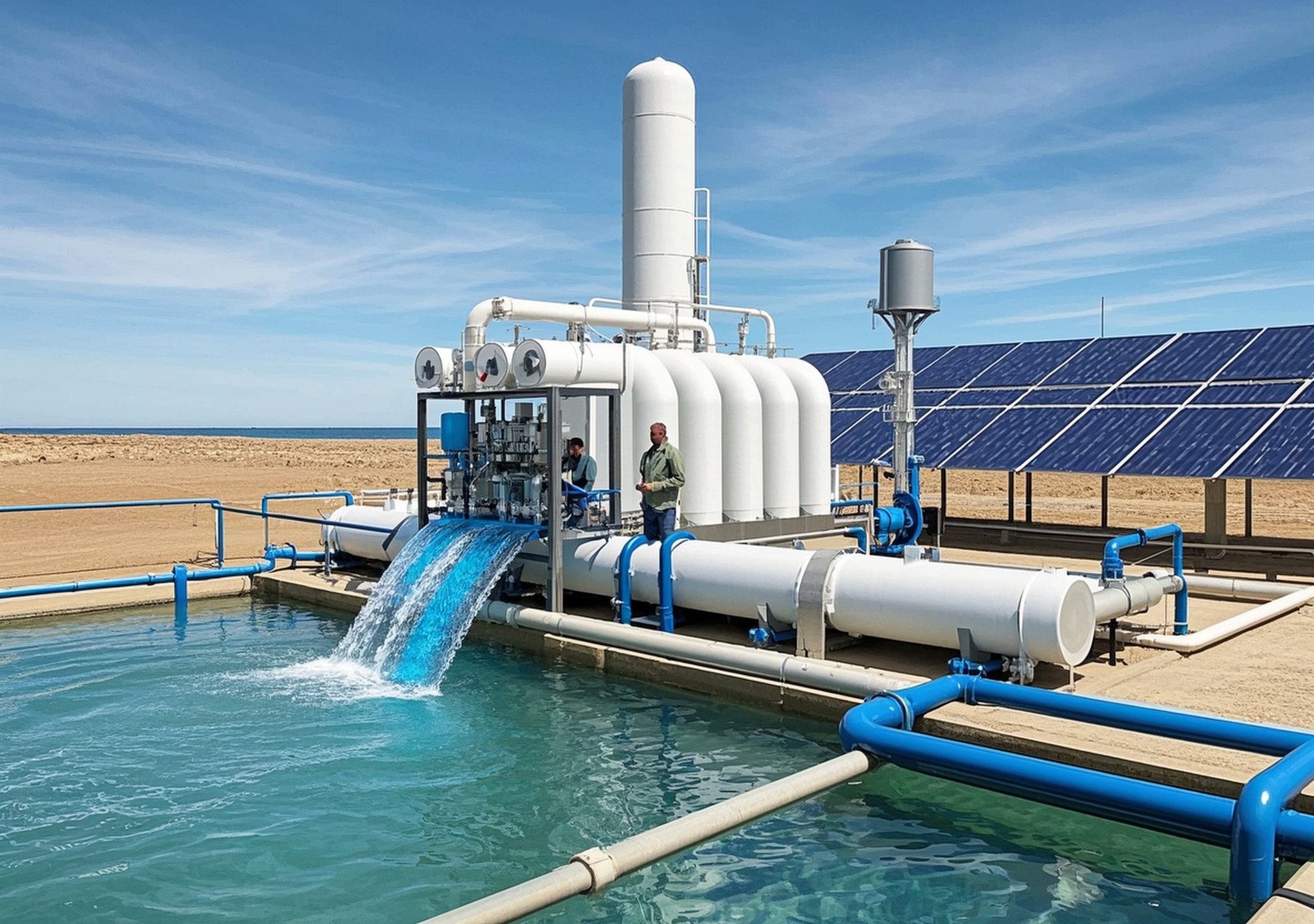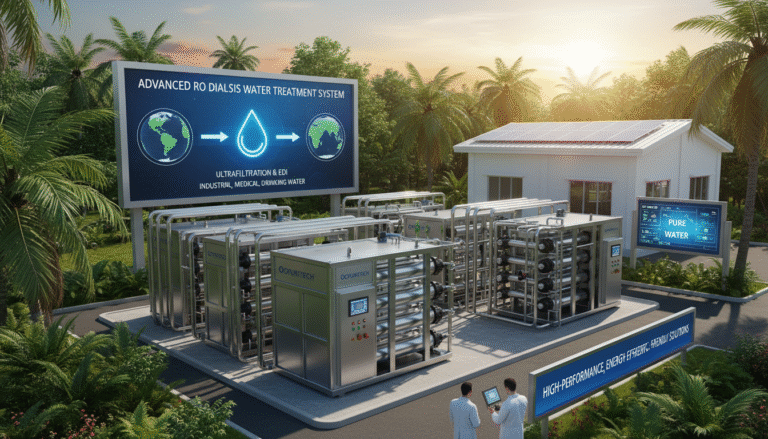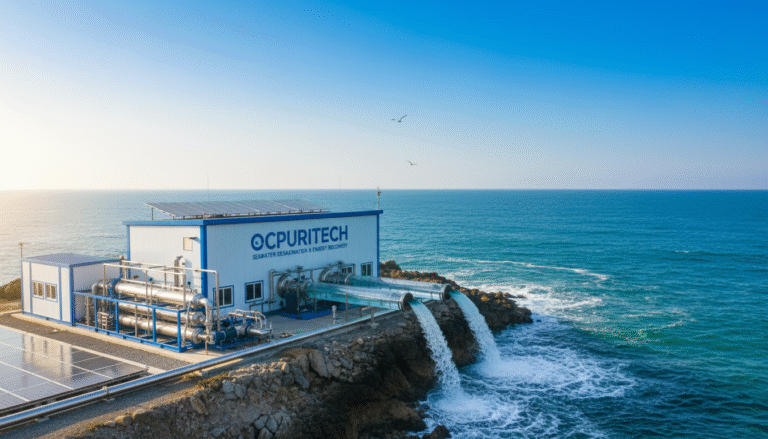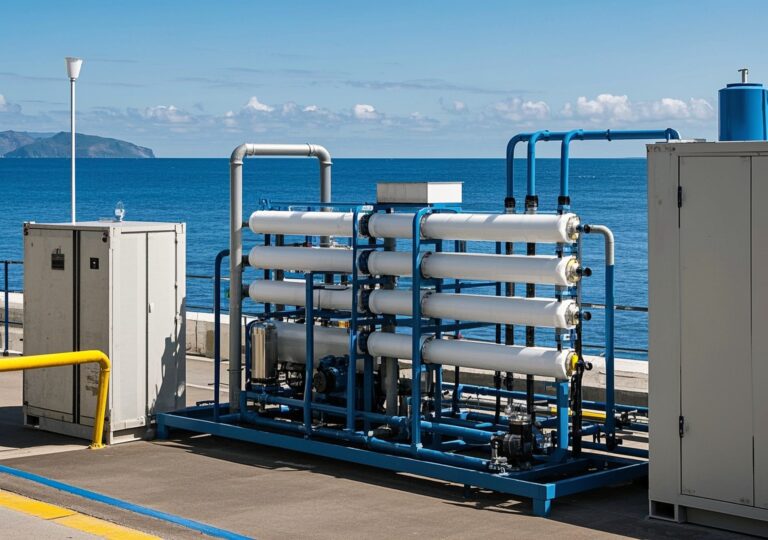Bold Insights: Leveraging Seawater Specific Heat Capacity for Water Security

Bold Insights: Leveraging Seawater Specific Heat Capacity for Water Security
Across many regions worldwide, water scarcity presents a formidable challenge, profoundly impacting public health and economic growth. Particularly in arid and semi-arid areas, the lack of accessible freshwater sources constrains agricultural productivity, industrial development, and basic human sustenance. Water security has thus become a global priority, demanding innovative and scalable solutions that safeguard sustainable supplies.
A critical aspect often overlooked in water resource management is the thermal behavior of seawater, especially its specific heat capacity. This property plays a pivotal role not only in climate regulation but also in the engineering of water treatment systems such as desalination plants and thermal energy recovery units. With seawater’s specific heat capacity estimated at approximately 3985 J/(kg·K), slightly lower but comparable to freshwater, it serves as an efficient medium for thermal energy transfer, acting as a natural buffer against extreme temperature fluctuations according to recent authoritative data from Britannica and MIT’s thermophysical studies.
In regions reliant on seawater desalination, understanding and leveraging this thermal capacity is essential to optimize operational efficiency and reduce energy consumption. This article delves into how advanced water purification technologies exploit these thermal properties to address the water security crisis, offering both macro-level analysis and frontline case studies.
2. Overview of Water Purification Technologies and Products
Modern water treatment systems have evolved into complex infrastructures utilizing an array of physical and chemical processes. The most prevalent technologies include:
- Reverse Osmosis (RO): Employs semi-permeable membranes to separate salts and contaminants, central to seawater desalination.
- Ultrafiltration (UF): Uses fine membranes to remove suspended solids and pathogens, often as a pretreatment stage.
- Electrodeionization (EDI): Integrates ion exchange resins and electrical currents to continuously purify water without chemical regeneration.
Each technology adapts uniquely to local seawater characteristics, influenced by salinity, temperature, and thermal properties. For instance, seawater’s specific heat capacity determines the thermal load on membranes and related components, affecting lifespan and energy demand.
To visualize how these systems integrate, consider an advanced desalination plant design: incoming seawater is first pretreated via ultrafiltration to mitigate fouling risk, then pumped through RO membranes where freshwater permeates, and brine is discharged or further treated for resource recovery. Electrodeionization may follow for ultrapure water needs in industrial sectors.
[Image Placeholder: Diagram illustrating the flowchart of seawater treatment processes combining UF, RO, and EDI systems]
3. Regional Water Resource Challenges and Market Demand
Taking East Africa as an illustrative example, this region confronts extreme challenges due to unpredictable rainfall patterns, high evaporation rates, and limited groundwater recharge. Coastal urban centers rely increasingly on seawater desalination, yet face economic and infrastructural constraints.
In such environments, the significance of seawater’s thermophysical traits becomes evident. Understanding its specific heat capacity informs how treatment facilities manage energy usage across thermal-driven stages like thermal desalination or harvesting waste heat, leading to significant operational cost savings.
Industries such as agriculture and manufacturing demand consistent, high-quality water, accentuating the commercial need for reliable purification technologies. Additionally, governments prioritize scaling infrastructural projects that align with sustainable energy use and resilience against climate variability.
Hence, market demand is not only shaped by water quantity but also by treatment efficiency, cost-effectiveness, and adaptability — factors directly linked to seawater’s thermal properties.
4. Drinking Water Standards and Treatment Process Engineering
Globally, drinking water quality is governed by stringent standards such as those from the World Health Organization (WHO) and regional regulatory bodies. Meeting these benchmarks necessitates integrated treatment workflows:
- Source Water Assessment: Characterizing seawater chemistry including salinity and thermal profile.
- Pretreatment: Ultrafiltration or chemical dosing to protect downstream membranes and improve system longevity.
- Primary Treatment: Reverse osmosis to remove dissolved salts and organic contaminants.
- Post-treatment: Disinfection and pH adjustment ensuring microbiological safety and consumer acceptance.
- Monitoring Systems: Continuous sensors track parameters such as temperature, salinity, and turbidity, allowing real-time process optimization.
In designing these processes, engineers factor in the heat capacity of seawater to calibrate energy inputs for temperature-sensitive equipment. Higher heat capacity implies slower temperature changes, offering operational stability — a strategy evident in several plants I have consulted on where maintaining consistent membrane temperature preserved performance and cut maintenance costs by up to 15%.
5. Customized Solutions and Engineering Design
Tailoring water treatment solutions involves balancing community size, industrial load, local seawater characteristics, and energy resource availability. Project scope varies vastly from village-level installations providing several cubic meters daily to large-scale plants processing millions of cubic meters.
Key design parameters include:
- Pre-Treatment Adjustments: Adjusting filtration grades based on seawater turbidities and suspended solids.
- Softening and Scaling Control: Using chemical agents and automated conditioning systems where scaling risks are identified, leveraging seawater’s thermal and chemical behavior.
- Energy Recovery Systems: Incorporating pressure exchangers and heat recovery units, directly informed by seawater’s specific heat data.
- Advanced Control Architecture: Integration of IoT-enabled sensors to adjust operations dynamically, for example, responding to seasonal seawater temperature shifts.
In a recent project for a coastal industrial park, deploying real-time temperature and salinity-based adjustments reduced energy consumption by 18% annually, demonstrating the direct impact of embracing seawater’s thermal profile in system design.
[Image Placeholder: Engineering schematic showing system integration and monitoring in a desalination plant]
6. Real-World Applications and Impact Assessment
In one coastal municipality I advised, a hybrid desalination plant was implemented, combining ultrafiltration pretreatment with reverse osmosis membranes optimized for local seawater temperature and salinity. By leveraging the known specific heat capacity, operational parameters were finely tuned to balance membrane flux rates and energy usage. The outcomes were compelling:
- Reduced energy intensity by 12% compared to baseline estimates.
- Enhanced system resilience during seasonal temperature shifts, minimizing downtime.
- Improved water output quality consistently meeting WHO guidelines.
On the social front, access to safe drinking water increased household health indexes measured by reduced waterborne illnesses by 22% within the first year post-implementation. Economically, local industries reported gains in productivity due to stable water availability.
Another experience involved a remote island community utilizing solar-powered desalination units. Understanding the relatively high heat capacity of seawater enabled more efficient thermal storage design, leading to less dependency on battery systems and reduced operational costs by nearly 25%.
7. Conclusion and Call to Action
Water security in vulnerable regions mandates a blend of scientific understanding and practical engineering. Recognizing and utilizing the specific heat capacity of seawater can substantially improve the design and efficiency of water treatment plants. As demonstrated, aligning purification technologies with seawater’s thermal and chemical characteristics ensures sustainable, cost-effective water supply solutions.
For stakeholders in water-scarce locales, embracing these insights offers a path to resilient infrastructure that benefits public health and economic development. I encourage municipal planners, industrial operators, and development agencies to engage actively with experts in thermophysical analyses and advanced treatment system design to tailor solutions meeting their unique environmental challenges.
Together, we can pioneer water security innovations that are both scientifically robust and socially impactful—redefining how communities access and sustain freshwater in the age of climate uncertainty.
References:
- Britannica – Seawater: Temperature, salinity, and density
- Massachusetts Institute of Technology (MIT) – Thermophysical properties of seawater




